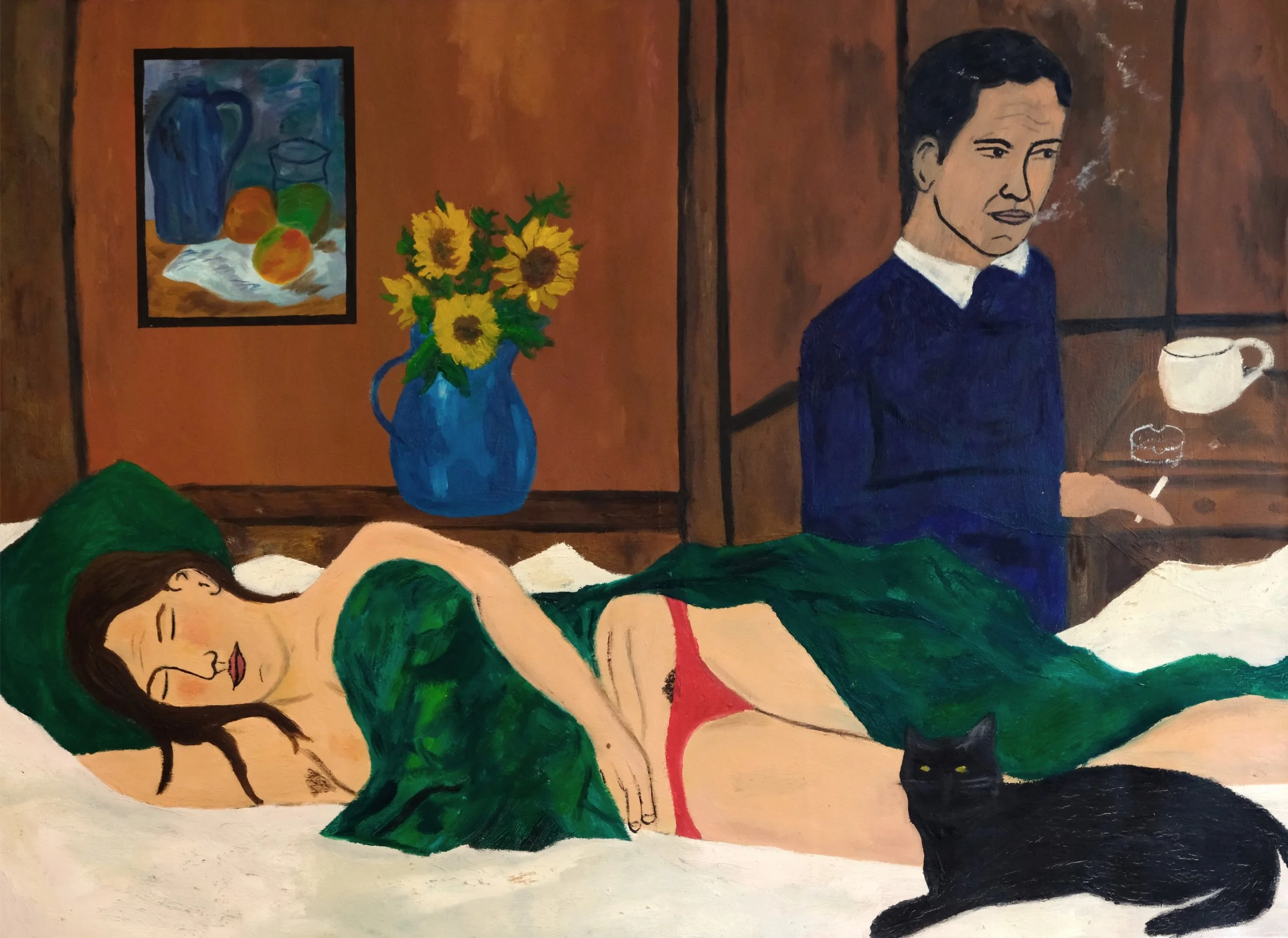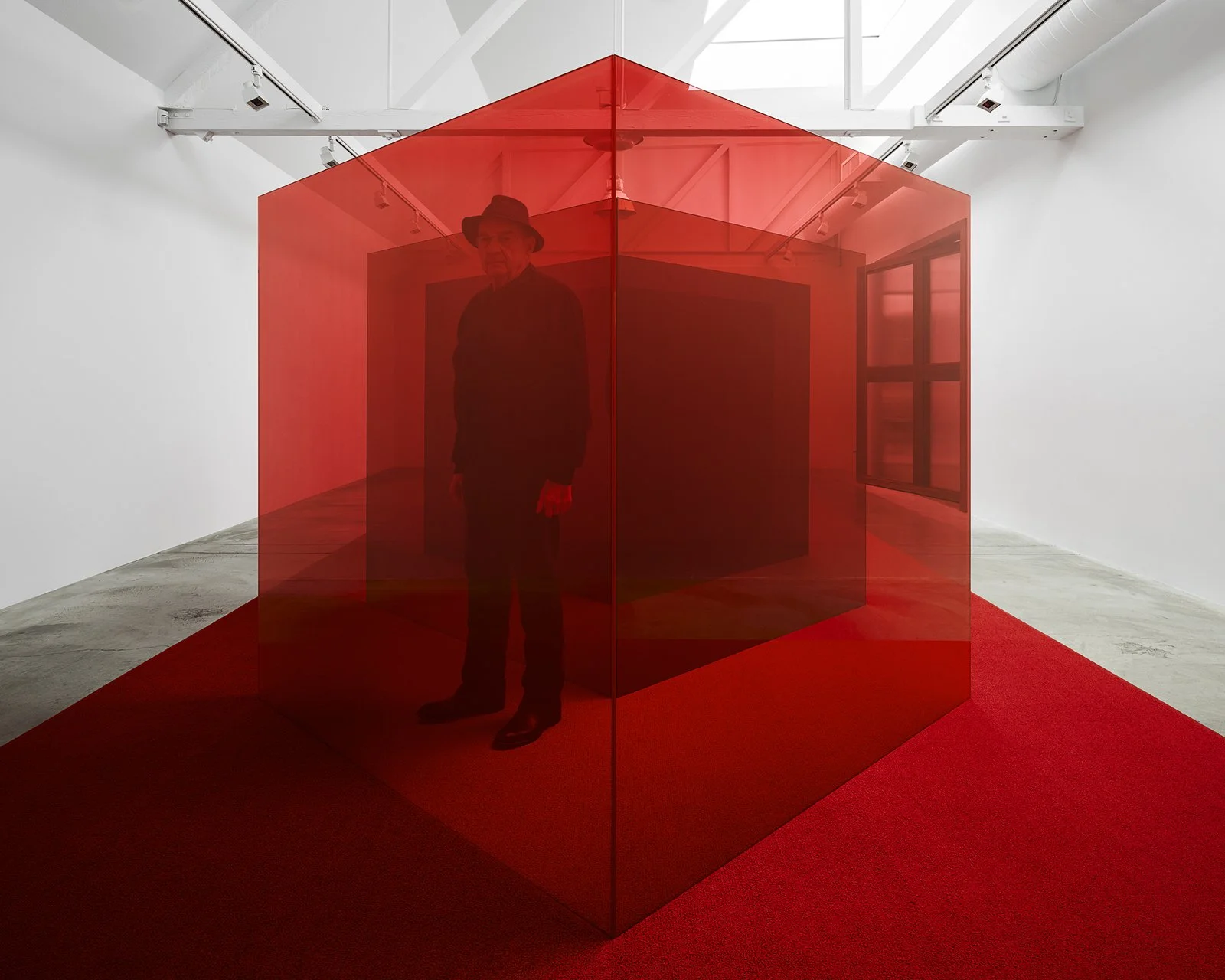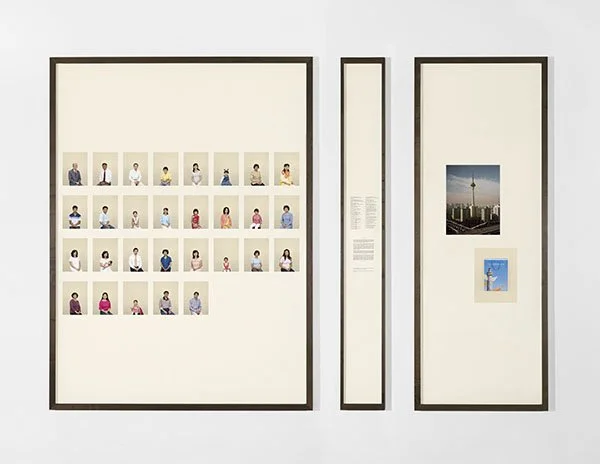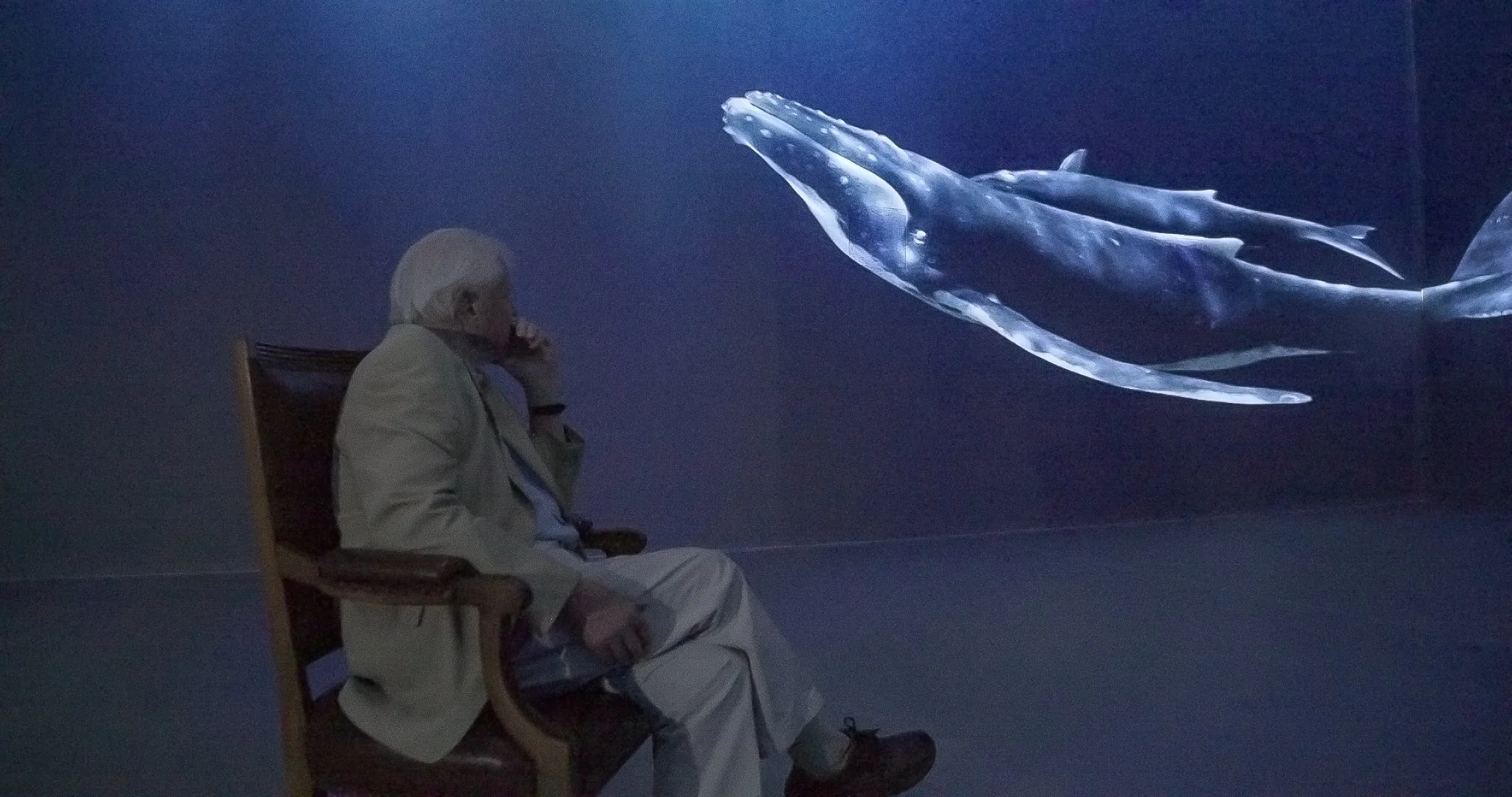Christelle Oyiri
Hauntology of an OG, 2025
Video still
Courtesy of the artist, the LAS Art Foundation, Amant, and the Pinault Collection
text by Arlo Kremen
photography by Jacopo La Forgia
images by Christelle Oyiri and Neva Wireko
For Berlin Art Week, artist Christelle Oyiri teamed up with CEL, a freshly formed Black, female art collective, and Las Foundations to bring Berlin her first installation in the city at CANK in Neukölln, a retired 1950s mall turned event space. The exhibition shows alongside an event series by CEL called “Foundations.” One such event transformed the space into a nightclub of sorts, bringing several DJs to perform with Oyiri, who performs under the stage name Crystalmess, to headline. Unfortunately, Oyiri could not make it due to flight issues beyond her control, but its impact on the installation site remained palpable.
The installation sees CANK’s spacious second floor emptied. On one side, CEL projects a short film of their own; the other hosts two films of Oyiri’s, Hyperfate (2022) and Hauntology of an OG (2025). Between the two ends, darkness fills in the gap, with green and blue overhead fluorescents bleeding in and out to choral-like, electronic waves. Obscure darkness swells, not just with light, but also with something else, a numinous effect common to nightlife—a world in which, ideally, freedom is sovereign and individuals can collect into a symbiotic ecosystem, where, as Oyiri put it in an interview, music produces “unspoken connections.”
Christelle Oyiri
Dead God Flow, 2025
Courtesy of the artist, the LAS Art Foundation, Amant, and the Pinault Collection
Born and raised in the Paris region to Ivorian and Guadeloupean parents, Christelle Oyiri brings much of herself to her art practice. As an artist who occupies the nightlife world, she demonstrates great care for the poetics and politics of music and musicians, especially those of rap and rappers, the subject of her two films in Dead God Flow, where music brings her to look upon herself and her history in relation to these figures in Hyperfate and to adventure to Memphis, Tennessee, to look up close at one of southern rap’s capitals in Hauntology of an OG.
Hyperfate studies systems of power and surveillance within rap culture. Oyiri traces the culture’s relationship with death, noting how a rapper’s trajectory can significantly affect the probability of their death. The figure of the rapper, a sign of wealth and success, often becomes a target of envy and ridicule, particularly for rappers who come from gang-affiliated backgrounds. Such a dynamic only becomes exacerbated by constant self-surveillance online. It is through her reflection that Oyiri posits that the rap industry became so bloodied, thinking of rappers like Tupac, XXXTENTACION, Pop Smoke, and Takeoff as figures drawn to their premature deaths as prophecy, which is horrifically par for the course of their trade, dying by the same hand that gave them glory.
Oyiri ties in her own biography into the narrative, discussing her older brother’s path to winning the European championship inThai boxing and sharing footage of her childhood apartment building. Her filmed documentary footage, whether in Paris or driving around Pop Smoke’s neighborhood, Canarsie, Brooklyn, cuts between rappers’ IG lives and stories, images and videos of her and her family, and a supernova, grouping personal narrative with the historical to sublimate it. The question of prophetic deaths and material realities of racial capitalism becomes enlarged, cosmic questions with existentially urgent consequences.
Developed alongside photographer Veva Wireko in Memphis, Tennessee, and narrated by poet-rapper Darius Phatmak Clayton, Hauntology of an OG positions Memphis as a reference to ancient Egypt, with one pyramid serving as a parallel to the other. Oyiri understands the pyramid as a symbol of “death, continuity, and hierarchy,” looping the pyramid on the Mississippi River into a symbolic lineage that speaks directly to the contexts in which Memphis rap emerged—namely, the end of the futurity expressed by Martin Luther King Jr. after his death in 1968. Giving his last speech in Memphis, Oyiri sees the city’s rap culture as somewhat of an elegy to this snuffed-out dream. A since-past desire for an alternative future tormented by the vitriolic racism Black Americans endure, particularly in the poor, Bible Belt city of Memphis, where this past April, Clayborn Temple, a Black church community center and the historic organizing point for King Jr., was intentionally burned down.
Christelle Oyiri
Hauntology of an OG, 2025
Courtesy of the artist, the LAS Art Foundation, Amant, and the Pinault Collection
The pyramid’s construction was completed in 1991 and was intended to serve as an entertainment venue for concerts and sports. However, today, the structure is a shopping center, housing the Bass Pro Shop megastore, among other commercial enterprises. Rather than a theological monument to a deceased pharaoh, Memphis’s pyramid memorializes and upholds the economic episteme that produced it, liberal capitalism; thus, Memphis rap produces a different monument, a sonic architecture dedicated to histories of struggle. The show’s title, Dead God Flow, refers to Nietzsche’s “God is Dead” concept, where Oyiri witnesses Nietzsche’s epistemic utterance in Memphis’s rappers, hearing in their flows a call for a new future.
Dead God Flow is presented by LAS Art Foundation and is on view through October 19 @ CANK, Karl-Marx-Straße 95, Berlin-Neukölln


























































































